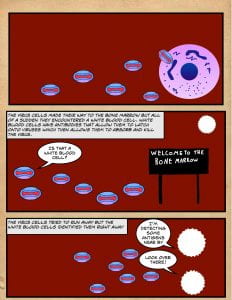This project was called comic cells and revolved around cells and diseases. The first task of the project was to make a project start mind-map. Here is mine: 
We had to choose what kind of virus we were going to base our project on. Mine was on the small pox virus. To start our research we made a disease wanted poster to gather all the key information of the virus. Here is mine:
Before starting our main task which was making a comic, we had to make a storyboard to map out our comic and see if it had enough scientific ideas in the story. Here is mine:
After we completed our storyboard we could now start on the main task of the project which was to make a comic about cells and diseases and how they affect our immune systems. My comic book was about a man who contracted the virus then it shows the cells inside his body fighting off the virus. You can view my comic here:
For the grading process of this project we were graded on three curricular competencies such as:
Questioning and predicting: Demonstrate a sustained curiosity about a scientific topic or problem of personal interest: I feel like I did well on this competency because I was very concentrated on finishing my comic book as the project was a lot of fun.
Scientific communication: Communicate ideas, findings, and solutions to problems using scientific language, representations and digital technologies: I feel like I exceeded on this competency because I made sure to use lots of scientific language in my comic book.
Evaluating: Demonstrating an understanding and appreciation of evidence: I feel like I did well on this competency by showing in my comic book how the viruses and cells interact with each other.









